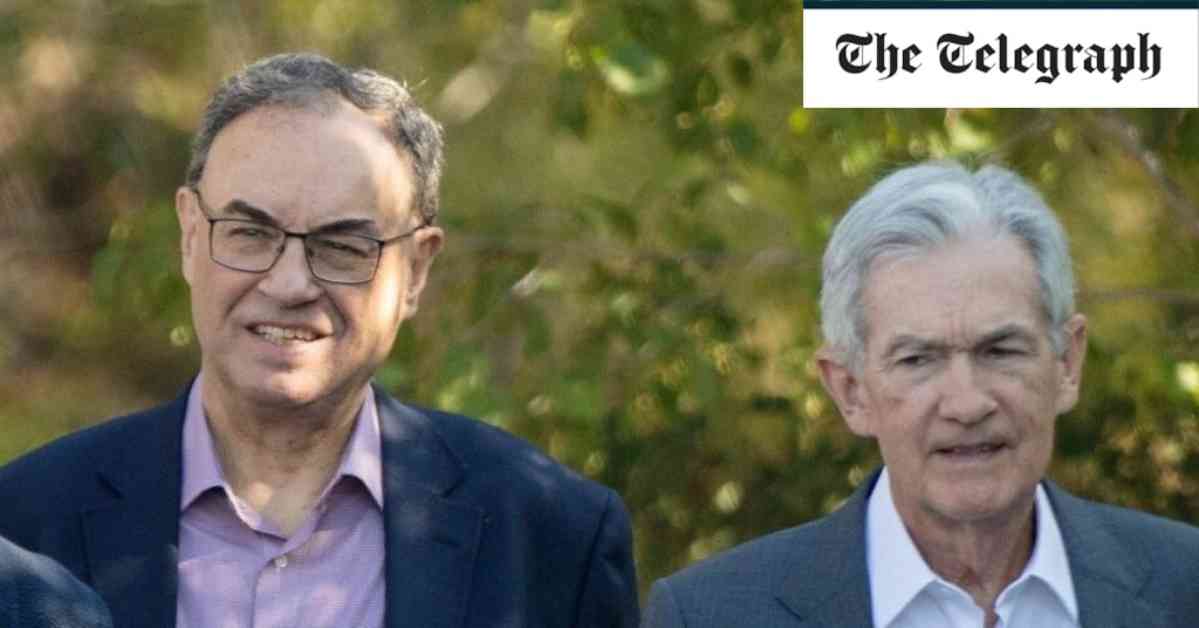Jerome Powell, the Federal Reserve chairman, has made a significant announcement hinting at potential interest rate cuts in the United States. This move comes as a response to the positive news that inflation is showing signs of being under control not only in the US but also across the Western world. The indication of a possible reduction in borrowing costs from the current level of 5.5% is seen as a much-needed boost for the global economy.
At the Jackson Hole economic conference in Wyoming, Mr. Powell stated, “The time has come for policy to adjust. The direction of travel is clear, and the timing and pace of rate cuts will depend on incoming data, the evolving outlook, and the balance of risks.” This statement reflects the Federal Reserve’s readiness to take action to support economic growth and stability.
In his address, Mr. Powell highlighted the positive developments in the economy, noting that after four and a half years since the arrival of Covid-19, the worst of the pandemic-related economic disruptions are fading. He pointed out that inflation has significantly decreased, the labor market is no longer overheated, and conditions are now less tight compared to pre-pandemic levels.
The prospect of more rapid rate cuts across the Western world signals a collective effort to address the ongoing cost of living crisis. Mr. Powell’s commitment to supporting a strong labor market and making further progress toward price stability underscores the Federal Reserve’s dedication to promoting sustainable economic growth.
The announcement from the Federal Reserve chairman has already had a positive impact on financial markets, with stock markets experiencing a slight rise and the dollar weakening against other major currencies such as the pound. Traders in financial markets have increased their bets on a rate cut, anticipating a potential move of 0.25 percentage points from the Fed, with the possibility of a double cut that could bring rates down to 5%.
Following Mr. Powell’s remarks, Andrew Bailey, Governor of the Bank of England, also weighed in on the discussion, suggesting that British inflation is falling faster than initially anticipated. He mentioned that “persistent” factors contributing to high price rises appear to be less significant than previously thought, raising the possibility of further rate cuts by the Monetary Policy Committee.
Mr. Bailey’s comments offer hope for mortgage borrowers in the UK, who are currently facing an average interest rate of 4.8% on new loans. The potential for additional reductions in borrowing costs could provide relief to consumers and stimulate economic activity in the country.
Despite the positive developments, Mr. Bailey emphasized the need for caution, stating that the job is not yet completed in terms of achieving sustained inflation targets. While recent data suggests that inflation expectations are better anchored, it is still too early to declare victory over the inflation crisis.
The Governor’s concerns about rising wages and persistent increases in services prices highlight the challenges that lie ahead in maintaining price stability. While inflation briefly reached the 2% target in May and June, it edged up to 2.2% in July and is expected to rise further due to higher energy prices.
The potential impact of significant pay rises on inflation remains a concern, especially in light of recent wage increases offered to strikers and public sector workers. The combination of rising energy prices and higher pay packets has raised fears of reigniting the inflation crisis in the UK.
Rachel Reeves, the Chancellor, has acknowledged the need for tax rises to fund government spending, including pay increases. She expressed shock at the state of the public finances left by the previous administration, underscoring the challenges faced in addressing economic issues effectively.
In conclusion, the hints at rate cuts by central banks such as the Federal Reserve and the Bank of England reflect a coordinated effort to address economic challenges and support growth. The commitment to adjusting policies in response to evolving data and risks demonstrates a proactive approach to maintaining stability and promoting prosperity in the global economy. As the world navigates through uncertain times, the decisions made by central banks will play a crucial role in shaping the future trajectory of economic recovery and resilience.












